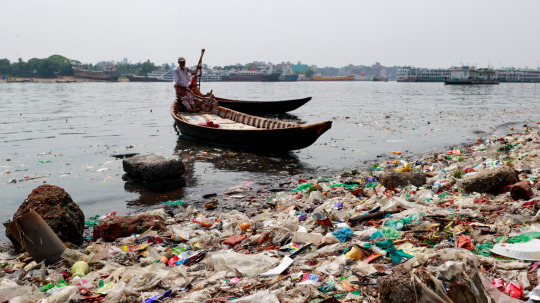#fossil shell UK
Explore tagged Tumblr posts
Photo

Sycostoma pyrus Fossil Gastropod – Eocene Barton Beds – Barton-on-Sea, Hampshire, UK – Authentic Specimen
Authentic Sycostoma pyrus Fossil Gastropod – Eocene Period – Barton-on-Sea, Hampshire, UK
This beautifully preserved specimen is an authentic fossil of Sycostoma pyrus, a marine gastropod from the Eocene epoch, recovered from the renowned Barton Beds at Barton-on-Sea, Hampshire. It offers collectors a striking example of molluscan life from around 40 million years ago.
Fossil and Geological Information:
Species: Sycostoma pyrus
Family: Melongenidae
Superfamily: Buccinoidea
Order: Neogastropoda
Geological Stage: Bartonian Stage, Middle to Late Eocene (approximately 41.2–37.8 million years ago)
Formation: Barton Beds (Upper Bracklesham Group)
Location: Barton-on-Sea, Hampshire, England, UK
Depositional Environment: Shallow, subtropical marine shelf with fine sands and silts—ideal for preserving invertebrate fossils
Notable Morphological Features:
Pyriform (pear-shaped) shell with a moderately tall spire
Robust body whorl and faint spiral ornamentation
Distinct aperture structure typical of marine carnivorous snails
Biozone: Consistent with the Barton Group invertebrate fossil biozones, often tied to zones containing Venericardia planicosta and other bivalves and gastropods
Scientific Recognition: First described and classified during early research on Hampshire Basin fossil faunas (original naming and revisions by various 19th-century naturalists including Edward Forbes and S.V. Wood)
Specimen Details:
Discovered by: UKGE team members Alister and Alison
Date of Discovery: 15 April 2023
Prepared by: Alison
Scale Reference: Scale cube = 1cm – refer to photo for exact measurements
Photographic Accuracy: The specimen you see is the exact fossil you will receive
Authenticity Guarantee: All of our fossils are 100% genuine and include a signed Certificate of Authenticity
About the Barton Beds:
The Barton Beds of the Hampshire Basin are internationally famous for yielding an abundant and well-preserved marine fauna from the Eocene period. These include molluscs, sharks' teeth, bryozoans, and more—offering a window into Britain’s warm, tropical marine past.
This fossil is not only a valuable collector’s item but also a striking natural artefact perfect for educational use or display.
#Sycostoma pyrus fossil#Eocene gastropod#Barton Beds fossil#fossil shell UK#Barton-on-Sea fossil#Hampshire fossil mollusc#marine gastropod fossil#Eocene mollusc#authentic fossil shell#UK fossil invertebrate#British fossil gastropod#marine sediment fossil#palaeontology UK
0 notes
Text
On Tuesday. BP posted an annual profit of $12.9 billion. Shell reported a profit of $19.3 billion last week. Meanwhile, we have skyrocketing energy bills. We have a cost-of-living crisis that the Bank of England says is the biggest drop in disposable incomes in decades. If Labour doesn’t bring in an energy company windfall tax, maybe we need to start putting quotes around “Labour.”
4 notes
·
View notes
Text


precious assemblage
#with sea glass#earthenware from various countries uk cyprus spain n france#stone from aphrodite’s beach#fossils#lil bit of painted pottery i found in a stream in birmingham#soooo many stones with druzy crystals#and lots of pretty shells#tu es à moi
4 notes
·
View notes
Text
Israel relies on crude oil and refined products from overseas to run its large fleet of fighter jets, tanks and other military vehicles. The research, which was commissioned by the non-profit Oil Change International and shared exclusively with the Guardian, examines this fuel supply chain, which since the current conflict in Gaza began appears to have relied heavily on fossil fuels from Azerbaijan, Kazakhstan, Russia, Brazil, Gabon and the US. The analysis by Data Desk, a UK-based tech consultancy firm investigating the fossil fuel industry, suggests the major oil companies facilitating the fuel supplies include BP, Chevron, ExxonMobil, Shell and TotalEnergies.
[...]
Human rights experts said that countries and corporations supplying oil to Israeli armed forces may be complicit in war crimes and genocide. “The countries and companies that have continued to supply oil to the Israeli military since the decision of the international court of justice are contributing to horrible human rights violations and may be complicit in genocide,” said David Boyd, the United Nations special rapporteur on human rights and the environment. “Oil firms must ensure they’re not in the business of helping to entrench Israel’s apartheid system or fuelling war crimes and possible genocide in Gaza,” said Peter Frankental, Amnesty International UK’s economic affairs director, adding that it was incumbent on every company with commercial ties to the Israeli military to do “due diligence”.
Thu 14 Mar 2024
382 notes
·
View notes
Text
Excerpt from this story from Mother Jones:
Oil and chemical companies who created a high-profile alliance to end plastic pollution have produced 1,000 times more new plastic in five years than the waste they diverted from the environment, according to new data obtained by Greenpeace.
The Alliance to End Plastic Waste (AEPW) was set up in 2019 by a group of companies which include ExxonMobil, Dow, Shell, TotalEnergies, and ChevronPhillips, some of the world’s biggest producers of plastic. They promised to divert 15 million metric tons of plastic waste from the environment in five years to the end of 2023, by improving collection and recycling, and creating a circular economy.
Documents from a PR company that were obtained by Greenpeace’s Unearthed team and shared with the Guardian, suggest a key aim of the AEPW was to “change the conversation” away from “simplistic bans of plastic” that were being proposed in 2019 amid an outcry over the scale of plastic pollution leaching into rivers and harming public health.
Advertise with Mother Jones

River Buriganga, in Dhaka, Bangladesh.Suvra Kanti Das/Zuma Press
This story was originally published by the Guardian and is reproduced here as part of the Climate Desk collaboration.
Oil and chemical companies who created a high-profile alliance to end plastic pollution have produced 1,000 times more new plastic in five years than the waste they diverted from the environment, according to new data obtained by Greenpeace.
The Alliance to End Plastic Waste (AEPW) was set up in 2019 by a group of companies which include ExxonMobil, Dow, Shell, TotalEnergies, and ChevronPhillips, some of the world’s biggest producers of plastic. They promised to divert 15 million metric tons of plastic waste from the environment in five years to the end of 2023, by improving collection and recycling, and creating a circular economy.
Early last year the alliance target of clearing 15 million metric tons of waste plastic was quietly scrapped as “just too ambitious”.
The new analysis by energy consultants Wood Mackenzie looked at the plastics output of the five alliance companies; chemical company Dow, which holds the AEPW’s chairmanship; the oil companies ExxonMobil, Shell, and TotalEnergies; and ChevronPhillips, a joint venture of the US oil giants Chevron and Phillips 66.
The data reveals the five companies alone produced 132 million metric tons of two types of plastic, polyethylene (PE) and polypropylene (PP), in five years—more than 1,000 times the weight of the waste plastic the alliance has removed from the environment in the same period. The waste plastic was diverted mostly by mechanical or chemical recycling, the use of landfill, or waste to fuel, AEPW documents state.
The amount of plastic produced is likely to be an underestimate as it only covers two of the most widely used polymers: polyethylene, which is used for plastic bottles and bags; and polypropylene, used for food packaging. It does not include other major plastics such as polystyrene.
The new data was revealed as delegates prepared to meet in Busan, South Korea, to hammer out the world’s first treaty to cut plastic pollution. The treaty has a mandate to agree on a legally binding global agreement to tackle plastic pollution across the entire plastics life cycle.
But the talks, which have been subject to heavy lobbying by the alliance and fossil fuel companies, are on a knife-edge in a row over whether caps to global plastic production will be included in the final treaty.
Will McCallum, a co-executive director at Greenpeace UK, said the revelations had stripped off the thin layer of greenwash hiding the growing mountain of plastic waste oil companies were producing.
“The recycling schemes they’re promoting can barely make a dent in all the plastic these companies are pumping out,” he said. “They’re letting the running tap flood the house while trying to scoop up the water with a teaspoon. The only solution is to cut the amount of plastic produced in the first place.”
21 notes
·
View notes
Text
So I’ve been thinking of the EarthSpark children’s books again.


Besides the Guidebook, these two seem to be the only ones out atm that are original stories and not recaps/adaptions of episodes of the cartoon. I personally prefer original stories set roughly during the cartoon’s universe, and to no one’s surprise I’m naturally a big fan of the RiD15 books being all original stories.

However, my nitpick with the EarthSpark books is they’re too short and … safe. There’s no real conflict or if there is one, like Racetrack Recon, it’s resolved instantly…
Now kids books or not, I think most of us want some kind villain for the Autobots to fight, which the RiD books excelled in. My favorites being Scuzzard from above, Liege Maximo starting trouble because he was bored and needed a cheap thrill, and Drift meeting up with his old Decepticon crew. So what can the EarthSpark books do?
Well for starters:

Use Swindle. He’s perfect for low scale conflict, and you can get a lot of mileage out of him starting trouble with a guest star that the Terrans have to stop. Obviously you could experiment with other villains besides him, but still.
Book idea 1: Items have been going missing from Witwicky. The culprits are Swindle and Chop Shop.

Besides trying to make a quick buck, they also seek to steal important GHOST tech to benefit the Decepticons still roaming the Earth. Dot and Optimus have to keep Croft and Schloder distracted so the Terrans can put a stop to Chop Shop’s kleptomania.
Book Idea 2: The Decepticons need energy if they plan to still take over Earth and stick it to Megatron and GHOST. Swindle, seeing an opportunity to make some moolah, gets Octane and RatBat to join him on a fuel syphoning scheme.


I feel like it’d be a Jawbreaker and Grimlock story as a gag on fossil fuel.
Book Idea 3: Revision of Recon where Swindle fixes the race using the RiD15 originated Stunticons. I already talked about this one.
Book Idea 4: Tarantulas runs afoul of an old lab partner, the insane Autobot scientist Flame.


(For a potential toy, I feel Flame would be a hybrid design of these two, taking more from the one on the right for ease of toy design.) Flame, fed up with the humans treatment of Transformers, decides to release a Cyber-Virus bio weapon Tarantulas developed during the Great War, and use it to Cyber Form Earth into something more palatable. Tarantulas needs Nightshade, Wheeljack and Hashtag’s help in a race against the clock to defeat Flame’s mad ambitions. Akin to RiD15 Grimlock with Simacore, Nightshade gets their first arch rival in Flame.
Book Idea 5: Nightshade and Sam team up to take down crime in Philadelphia, playing up a bit of the superhero side to the owl. Playful parody of 60’s Batman, using Animated supervillains like Angry Archer and Nanosec.


The supervillains are part of a larger scheme by the Decepticon Malignus.

Of which Nightshade and Sam need to call in the rest of the “Teen Terrans” and Bumblebee to help deal with.
Book Idea 6: Optimus Prime’s trailer/Combat Deck starts malfunctioning and causing a rampage around town, causing a headache for GHOST and the Autobots.

It’s discovered the jailhouse Decepticons implanted a computer virus into the trailer via Bombshell’s Cerebro Shells to spite the Autobots. Twitch, Robbie and Hashtag have to jack in and defeat the computer virus within, Kremzeek, in a video game showdown while Jawbreaker, Mo, Thrash, Nightshade and Megatron try to contain the Combat Deck on the outside. There’s a fun visual of Roller effortlessly pulling the trailer around town in its rampage.
Book Idea 7: GHOST develop their own Navi program in TORQ III from studying Cybertronian technology and Teletraan 1.


A hybrid of the G1 episode, Marvel UK’s Raiders of the Last Ark, and TFP’s Flying Mind, TORQ finds GHOST inefficient and seeks to apprehend every remaining Decepticon on the planet with his own methods, regardless of the consequences to the Autobots, and humans like the Maltos. Optimus, Elita and Megatron have to stop TORQ and his mind controlled Decepticons from starting a new Machine War.
Book Idea 8: The elusive Mirage, based on the RotB version with his body being closer to RiD01 Mirage, returns and pays a visit to the Malto household to see what all the hubbub is.


Mirage, Robbie and Thrash become fast friends, and team up to put a stop to the latest scheme of Swindle’s. Battletrap, Transit and Scorponok are present as part of further RotB synergy.
#blueike productions#blueike#transformers#maccadam#decepticons#autobots#transformers earthspark#terrans#tf earthspark
76 notes
·
View notes
Note
Does any of the buildings in your country use limestone? If so do they do it with or without the fossil/shell imprints?



A lot of Texas buildings (particularly educational) use limestone and a lot of them keep the shell and fossil imprints
Most that im aware of were either constructed using Clipsham or were replaced by Clipsham eventually, it's like the hardest limestone in the UK or something. I think sections of Big Ben and Windsor Castle were constructed with it but i honestly don't know.
But the hall ive seen constructed with limestone is famously very sleek and neat. It's described as 'creamy and golden' on the official website which is a bit of a brag but it is a nice building.
but i couldn't recognise limestone if you put it infront of me so idk i might be the wrong person to ask.
but your limestone looks very cool. if i ever come across it, i'll keep my eye open.
3 notes
·
View notes
Text
Oil interests have funded cultural institutions such as museums, youth organizations and athletic groups in recent years, new research shows, in what appears to be a public relations effort to boost their image amid growing public awareness of the climate crisis.
Top US fossil fuel lobby group the American Petroleum Institute (API) sponsored a 2017 workshop for the Pennsylvania Girl Scouts, featuring “activities that mimicked work in the energy industry”. Energy giant BP in 2016 sponsored Washington DC’s National Gallery of Art and continues to fund the British Museum in London.
The new evidence of sponsorships was found in internal communications from 2015 to 2021 subpoenaed from big oil via a US congressional investigation last year. They were uncovered by Rebecca John, a researcher at the Climate Investigations Center, and published in the climate outlet DeSmog.
The documents also shed light on the particular value the companies see in the partnerships. In a 2017 email, for instance, the then CEO of API said the Girl Scouts sponsorship came as part of an effort to partner with “nontraditional local allies”, which he described as “some of the best and most influential voices with targeted policymakers on industry issues” who can help the lobby group overcome “policy issues”. API has a large lobbying presence in Pennsylvania, which is the country’s second-largest gas producer.
The British Museum has previously defended its partnership with BP, including after the company scaled back its climate goals this past February. The museum needs “corporate and private donations from companies like BP to ensure that the magnificent collection stays on display to the public for centuries to come”, a spokesperson told the Guardian at the time.
The documents indicate that in Shell’s 2020 “reputation plan” it said it would “secure partnerships with credible external influencers” in an effort to overcome “low credibility and trust” in the company.
The oil giant has partnered with a wide variety of major museums, sporting events, concert halls and other arts and cultural institutions. It could not be reached for comment, but its spokespeople previously said institutions can maintain their freedom even as they receive funding from Shell.
A 2017 internal memo from BP America says the relationships could provide a shield from “threats to BP’s reputation”, including “overall negative sentiment about the oil and gas industry” and the “policy and politics of climate change”. A separate 2016 document assessing the company’s “position” instructed staff to emphasize the message that more than 50 million people in the UK had “engaged with a BP-supported activity” due to its funding of institutions such as the British Museum and Royal Shakespeare Company.
The revelations come as activists have increasingly pressured arts and cultural institutions to cut ties with fossil fuel interests. The Royal Shakespeare Company, for instance, ended its BP partnership in 2019 after eight years, following months of protests over the partnership. At the time, BP said it was “disappointed and dismayed” by the decision.
DeSmog found evidence of dozens of other cultural sponsorships from the energy companies between 2015 and 2021, including of libraries, music festivals, gender justice initiatives and theaters. There have been hundreds of similar partnerships through history, from a children’s radio show funded by Standard Oil in the 1930s, to the current sponsorship of a media podcast by BP.
The relationships illustrate a decades-long industry strategy known as “affinity of purpose advertising”, said Robert Brulle, an environmental sociologist at Brown University. The term was coined by Herbert Schmertz, the late executive of Mobil Oil (now ExxonMobil).
“It’s the idea that if a corporation is associated with a high-value, cultural activity that prestige rubs off on the corporation,” said Brulle. In one well-known historical example, Mobil in the 1970s began sponsoring the television drama series Masterpiece Theater.
“Apparently this works quite well,” said Brulle, noting that Mobil evaluated the approach in a 1980 study and decided it was worthwhile. “It [has] now become a commonplace activity to burnish their corporate reputation and goodwill by sponsoring these types of cultural activities.”
2 notes
·
View notes
Text
Following the advent of the 2015 Paris Agreement, one of the lesser-known research sectors has been getting a workout.
Known as attribution science, it is the study of the big oil and gas (BOG) contribution to climate change for the primary purpose of holding BOG legally responsible. On January 13, 2025, the U.S. Supreme Court set precedence on behalf of climate litigation when it denied an oil company’s petitions to dismiss climate liability lawsuits from going to trial. Brought on by Honolulu against Sunoco LP and Shell, the lawsuits accused these BOG giants of lying about climate change risks as well as impacting the area’s extreme flooding and sea level rise.
Attribution scientists play an important role as their data is used almost extensively to prove such a claim. These folks are the perfect expert witnesses to have on your side when going up against the fossil fuel giants.
The Honolulu example is one of dozens of such actions that have multiplied over the last ten years. According to most experts, there are currently 85-90 worldwide cases pending against BOG, and more than half are within our nation. Since 2015, the number of cases nearly tripled, but according to experts none have resulted in an award-winning decision. ExxonMobil and Shell top the list of defendants accused of climate damage, misleading advertising, environmental impacts, emission proliferation, consumer harm, and criminal activity. The plaintiffs range from a Peruvian farmer alarmed over glacier melting, to U.S. counties/municipalities/cities suffering from the effects of extreme weather events, to Friends of Earth Netherlands coupled with 17,000 citizens accusing Shell of not reducing its emissions per the Paris Agreement.
Students for Climate Solutions New Zealand plus the UK Youth Climate Coalition submitted a case to the International Criminal Court against BP, formerly British Petroleum, senior executives alleging maximization of profits regardless of the severity of global warming. And so it goes, one after another spending millions of dollars fighting BOG when they should be partnering with them. The attorneys on both sides are smiling these days!
You probably thought, “Did Noah just go brain-dead?....
Read more at https://www.thescientistblog.com/blog/a-required-partnership
#climate change#government#hope#landscape#inspiration#global warming#philanthropy#climate crisis#democrat#republican
2 notes
·
View notes
Text
Torvoneustes jurensis
I did mention that new croc taxa were numerous this week. After covering both Triassic forms, here's the newest crocodyliform from the Jurassic. Torvoneustes jurensis, a large (4 meter) metriorhynchid.
Artwork by SDSO, figure from Girard et al. 2023


Now the genus Torvoneustes itself isn't a new one. The genus itself has been knocking around since 2010 whereas one species has been known since 1910. Fossils of this genus have previously been found in the UK, Czech Republic and even Mexico. This species tho is brand new tho, found in the Jura Mountains of Switzerland in 2008. The fossils date to the Kimmeridgian, the second to last stage of the Jurassic.
Like its relatives, Torvoneustes jurensis was an animal well adapted for life in the open ocean. The eyes faced sideways, the limbs were converted into flippers (with especially short arms), the tail had a fin more like that of a shark than the paddle of a crocodile. And it was smooth, lacking the osteoderm armor we so often associate with pseudosuchians. It reached a length of up to 4 meters, which puts it among the larger metriorhynchids alongside Suchodus (4.1), Dakosaurus andiniensis (4.3) and Torvoneustes carpenteri (4-4.7).
Artwork below by Dmitry Bogdanov

Being recovered as one of the most derived members of its genus, Torvoneustes jurensis is interesting as it allows to further observe the evolutionary trends undergone by this lineage. For example, the skull bones appear to have become increasingly smoother, possibly to be more hydrodynamic or because basking becomes less important. The oldest species also lacks the pseudoziphodont teeth seen in all others, but its possible that this was just lost in one form and retained by all others. There's also some straight up contradictions presented by T. jurensis relative to other species. For example, previously it was thought that species in the genus became increasingly durophagous, taking on harder shelled prey and thus developing less curved, more robust teeth. This does however not seem to be the case for this new species, which could have been more of a generalist. It also retains more teeth than other derived species of Torvoneustes, another trend seemingly debunked by this new find (tho toothcount was so far limited by available material, so this may change still if we find better fossils of the other species).

Overall its another really interesting find and while not a new genus, its still nice to see further exploration of the species diversity among crocodyliforms
#palaeoblr#prehistory#jurassic#croc#pseudosuchia#thalattosuchia#metriorhynchidae#geosaurinae#ocean croc#marine reptile#paleontology#paleontology news
57 notes
·
View notes
Text
“It seems the most logical thing in the world to believe that the natural resources of the Earth, upon which the race depends for food, clothing and shelter, should be owned collectively by the race instead of being the private property of a few social parasites.
— Ralph Chaplin
While more and more homes in Britain suffer severe flooding because of climate change, Rishi Sunak has decided that North Sea oil and gas extraction should be speeded up.
“Hundreds of new North Sea oil and gas licences to boost British energy independence and grow the economy. ” (GOV.UK: 31/07/23)
This policy has now been confirmed and will be included in the king’s speech. More concerned with winning votes than the catastrophic effects of climate change:
“Sunak has already watered down the government’s climate targets, pushing back the deadline for selling new petrol and diesel cars and the phasing out of gas boilers, prompting furious condemnation from the automobile and energy industries.” (Guardian:05/11/23)
The excuse used by Sunak to justify his planned increase in fossil fuel production is "to reduce emissions and boost UK energy independence."
These claims are simply not true.
Encouraging more oil and gas production does not reduce emissions - it increases them. If you expand the global market for fossil fuels then more will be used with the obvious accompanying increase in emissions. What is more, Rystad Energy, an independent advisory and business intelligence company, has stated that:
“ UK oil rigs are among the highest carbon emitters in Europe. CO2 emissions released into the atmosphere from extracting North Sea oil and gas reached 13.1MM metric tonnes in the UK in 2019, or 21kg of carbon dioxide for every barrel of oil produced – far greater than the Norwegian North Sea, which produced 4MM metric tonnes of CO2 in 2019, or 8kg of CO2 a barrel.” (Guardian: 13/10/22)
But let us put this evidence aside for the moment and give Sunak the benefit of the doubt regarding emissions, and look at his other claim that increase extraction of gas and oil from the North Sea will “boost UK energy dependency".
Again, simply not true. It was reported only a few weeks ago that the UK EXPORTS 80% of North Sea oil which is processed abroad and then sold back to us at whatever international price makes the oil and gas industries the most profit. (CNN Business: 27/09/23)
The only way to secure energy independence is to have state ownership of our natural assets. But that is not The Tory way.
Unlike the Norwegian government, who invested their countries enormous oil and gas revenues in economic sectors across the world, creating a State owned sovereign wealth fund now worth $1.2 trillion in assets, our Tory government squandered the money, continues to allow private investors to reap the profits, and have refused to create a UK Sovereign Wealth Fund because they are ideologically opposed to public ownership.
While Sunak is forced to sell licenses for oil and gas extraction in order to secure at least some benefits from our natural resources, the Norwegians impose a 78% tax levy on private oil and gas companies.
“UK should match Norway’s 78% North Sea oil and gas tax, thinktank says.” (guardian:28/10/22)
But that isn’t going to happen. Instead, our ideologically driven Tory government, opposed to taxes of any kind and especially those aimed at the rich and corporate world continue to draw headlines like these.
“Shell and BP paid zero tax on North Sea gas and oil for three years.” (Guardian: 30/10/22)
and
“North Sea oil and gas industry offered ‘get-out’ clause on windfall tax.”(Guardian:09/06/23)
The stark contrast between the way successive Tory Government’s in the UK have managed the “bonanza” of North Seal oil and gas and the way the more socialist Norwegian governments have utilised their natural resources couldn’t be more stark.
#uk politics#rishi sunak#sovereign wealth fund#oil and gas extraction#environment#profits#benefits#climate change#flooding
30 notes
·
View notes
Photo

Liparoceras cheltiense Ammonite Fossil - Lower Pliensbachian, Jurassic, Blockley, Gloucestershire, UK | 100% Genuine Specimen + COA
A stunning and rare Liparoceras cheltiense Ammonite Fossil from the Lower Pliensbachian Stage, Jurassic, Blockley, Gloucestershire, UK. This beautifully preserved ammonite showcases the intricate ribbing and robust shell structure characteristic of this species, making it a valuable piece for collectors, educators, and fossil enthusiasts alike.
✅ 100% Genuine Specimen – Every fossil we sell is authentic and comes with a Certificate of Authenticity.
✅ From the Alice Purnell Collection – A carefully curated specimen with historical significance.
✅ What you see is what you get – The listing photos show the exact specimen you will receive.
✅ Includes size reference – Scale cube in photos = 1cm. Please refer to the images for full dimensions.
✅ Ideal for collectors, display, or scientific study – A visually stunning and scientifically significant ammonite specimen.
About Liparoceras cheltiense Fossil Ammonites:
Liparoceras cheltiense is a species of ammonite from the Lower Pliensbachian Stage of the Early Jurassic period, approximately 190-195 million years ago. These ammonites belonged to an extinct group of marine cephalopods related to modern-day squids, octopuses, and nautiluses.
This species is known for its thick, evolute shell with strong ribbing and pronounced keels, making it a distinctive and highly recognizable ammonite. Fossils of Liparoceras are found in marine sedimentary deposits, particularly in Blockley, Gloucestershire, UK, a site well-known for its exceptional fossil preservation.
Ammonites like Liparoceras cheltiense played a crucial role in prehistoric marine ecosystems and are important index fossils used by paleontologists to date rock layers. Their intricate shell patterns and evolutionary significance make them highly sought-after by collectors and researchers.
Perfect for display, educational purposes, or as a unique gift for fossil lovers and paleontology enthusiasts, this ammonite is a one-of-a-kind addition to any fossil collection.
Shipping & Packaging:
🔹 Securely packed for safe transit 🔹 Worldwide shipping available 🔹 Tracked & insured delivery options
Why Buy from Us?
🔹 Trusted Seller – Specializing in fossils, minerals, and natural history specimens. 🔹 Certified Authenticity – Every purchase includes a signed Certificate of Authenticity. 🔹 Ethically Sourced – All our fossils are legally and responsibly collected.
Own a scientifically valuable piece of Jurassic history today!
#Liparoceras cheltiense#fossil ammonite#Jurassic ammonite#Blockley ammonite#Gloucestershire fossil#UK fossil#Lower Pliensbachian fossil#ammonite collector#ammonite specimen#ammonite shell#ammonite fossil for sale#rare ammonite#prehistoric fossil#fossilized ammonite#geological specimen#fossil display#ammonite identification#ammonite paleontology#fossil hunting#ammonite evolution#Alice Purnell Collection#cephalopod fossil#fossil enthusiast#ammonite shop#ammonite decor#ammonite history#fossil gift#ammonite energy
2 notes
·
View notes
Text



Olivia Colman has dressed as a latex-wearing oil executive called Oblivia Coalmine in a new campaign video highlighting the role of pension funds in fossil fuel projects.
The Academy Award-winning actress’s character thanks pension savers for allowing oil and gas companies to “dig, drill and destroy more of the planet than ever before” and spills an oily black liquid over her face while toasting with a champagne glass.
Created on behalf of the group Make My Money Matter, the advert encourages people to tell their pension schemes to remove their investments in fossil fuel projects.
Research from the campaign group found £88 billion of UK pension savers’ money goes to fossil fuel companies, £20 billion of which is to Shell alone.
Ms Colman said: “Fracking hell, Oblivia Coalmine really is a nasty piece of work. But the scariest thing about her is that she represents something very real.
“That’s why this is such an important campaign. I hope everyone who sees this ad realises the shocking, but unintended, impacts of our pensions and makes their money matter. It really is one of the most powerful things we can all do to protect the planet.”
The advert, created by Lucky Generals and directed by Raine Allen-Miller, coincides with recent polling that suggests 19 per cent of pension savers support their money going towards oil and gas and 66 per cent want it to go to renewables.
David Hayman, the campaign’s director, said pension funds invest in fossil fuels because it has typically provided a good return, but this is likely to change with the global energy transition, which is putting the money increasingly at risk.
He said: “Pension funds are investing billions each year in companies developing new oil and gas, this is bad for people and bad for the planet.
“If we are to stay below 1.5C of warming, fossil fuel expansion must stop, and our pensions can play a big role in this.
“These companies face the risk of stranded assets, government regulation and customer pushback, so continuing to sink our money into these companies is hugely risky.
“It’s time for pension funds to think beyond the short term and really consider what type of world their members will be retiring into in the future.”
Countries have committed to stop the Earth’s average temperature rising 34.7F (1.5C) above pre-industrial levels, considered the limit of a safe environment, and will gather in Dubai next week at Cop28 to discuss progress on this.
Research from the UN has found there to be only a 14 per cent chance of achieving this goal with current policies, predicting that the Earth will warm by 37.4F (3C) by the end of the century.
Mr Hayman said that not one major UK pension scheme has committed to stopping fossil fuel financing and that those people who want their savings removed should email their pension schemes.
He said: “The most powerful thing any of us can do is contact our pension scheme and tell them to stop using our money to finance new oil and gas.
“Our campaign has shown that consumer power can work in pushing big financial institutions to act on climate change, and the more people show they care, the more the pensions industry will have to listen.” (X)
39 notes
·
View notes
Text

Fossil Eocene gastropod shells from the Barton beds, Hampshire, UK.
2 notes
·
View notes
Text
The ruling from Lord Ericht to suspend the Rosebank and Jackdaw projects was announced today (30 January) following court proceedings late last year brought by NGOs Greenpeace UK and Uplift. Greenpeace had challenged both projects while Uplift focused its attentions on Rosebank. Lord Ericht ruled that the Oil and Gas Authority (OGA) and then-Business and Energy Secretary Kwasi Kwarteng acted unlawfully when approving Jackdaw in early 2022 because insufficient information had been provided in the environmental impact assessments considering downstream emissions – those produced when the oil and gas produced is finally used. Lord Ericht reached the same conclusion regarding the OGA and then-Energy and Net-Zero Secretary Claire Coutinho’s approval of Rosebank in mid-2023. Both approvals were justified on the grounds of job creation and energy security, despite the fact that oil and gas are globally traded commodities, limiting the UK’s ability to reserve production for itself. Around 80% of North Sea oil production is for export. Extracting fossil fuels from the Rosebank oil field project, being developed by Equinor, and the Jackdaw project, being developed by Shell Group subsidiary BG International, will now be banned unless either developer can present updated environmental impact assessments. Ministers should assess whether the figures could be compatible with legally binding carbon budgets. The final opinion documents state: “The public interest in authorities acting lawfully and the private interest of members of the public in climate change outweigh the private interest of the developers. The factors advanced by Shell, Equinor and Ithaca in respect of their private interest do not justify the departure on equitable grounds from the normal remedy of reduction of an unlawful decision.”
30th January 2025
60 notes
·
View notes
Text
Excerpt from this story from DeSmog Blog:
Climate campaigners have filed a complaint against WPP, the London-based advertising giant, with the Organisation for Economic Co-operation and Development (OECD), stating that it has violated key corporate guidelines on climate and human rights.
Adfree Cities and the New Weather Institute filed the complaint today with the UK branch of the OECD.
They charge that WPP’s work for major fossil fuel polluters like BP, Saudi Aramco and Shell, along with its work for other heavily polluting industries such as carmakers, airlines, and plastics, makes the company accountable for enabling pollution as well as human rights violations. According to DeSmog’s research, WPP — the world’s largest advertising agency by revenue — also works with TotalEnergies, as well as a number of other oil and gas clients.
“The complaint significantly raises the legal risks for advertising firms,” said Harj Narulla, a barrister representing the climate campaign groups and co-author of the complaint. “By continuing to work for polluting clients, WPP is failing to meet its own environmental commitments and contributing to harm on a global scale.”
The groups filed the complaint at the OECD’s “National Contact Point” in the UK, where WPP is headquartered. The campaigners say this is the first time the OECD has received a complaint against an advertising company.
“While claiming to take the climate crisis seriously, WPP has become the chief propagandist for some of the most polluting corporations on the planet — many of whom are shredding their own, already limited green pledges,” Andrew Simms, co-director of the New Weather Institute, told DeSmog. “This complaint is designed to compel WPP and its subsidiaries to comply with international rules it has signed up to, and the promises and claims it has made.”
Simms and his co-complainants say that WPP must disclose the emissions generated by its work for high-polluting clients, also known as “advertised emissions”; conduct due diligence to prevent damage to the environment and human rights as a result of its business operations; and drop clients not aligned with climate goals.
“All this would just bring WPP into line with what it already claims to live up to,” said Simms.
As of 2024, WPP had more fossil fuel industry contracts — at least 79 — than its major ad industry rivals, according to research by campaign group Clean Creatives.
#ad agencies#greenwashing#WPP#public relations#OECD#Organisation for Economic Co-operation and Development
13 notes
·
View notes